- The House of Wisdom
- Posts
- The ancient wonder we are not talking about enough
The ancient wonder we are not talking about enough
The first question you might be asking: What are Greek columns doing all the way in Jordan?
Hidden amidst the rugged cliffs stands a structure that defies both time and expectation — Al-Khazneh, or as it's more famously known, "The Treasury” of Petra.
It's one of the most iconic symbols of the ancient world, yet it’s still shrouded in mystery…
Who built it? How? And most importantly, why?
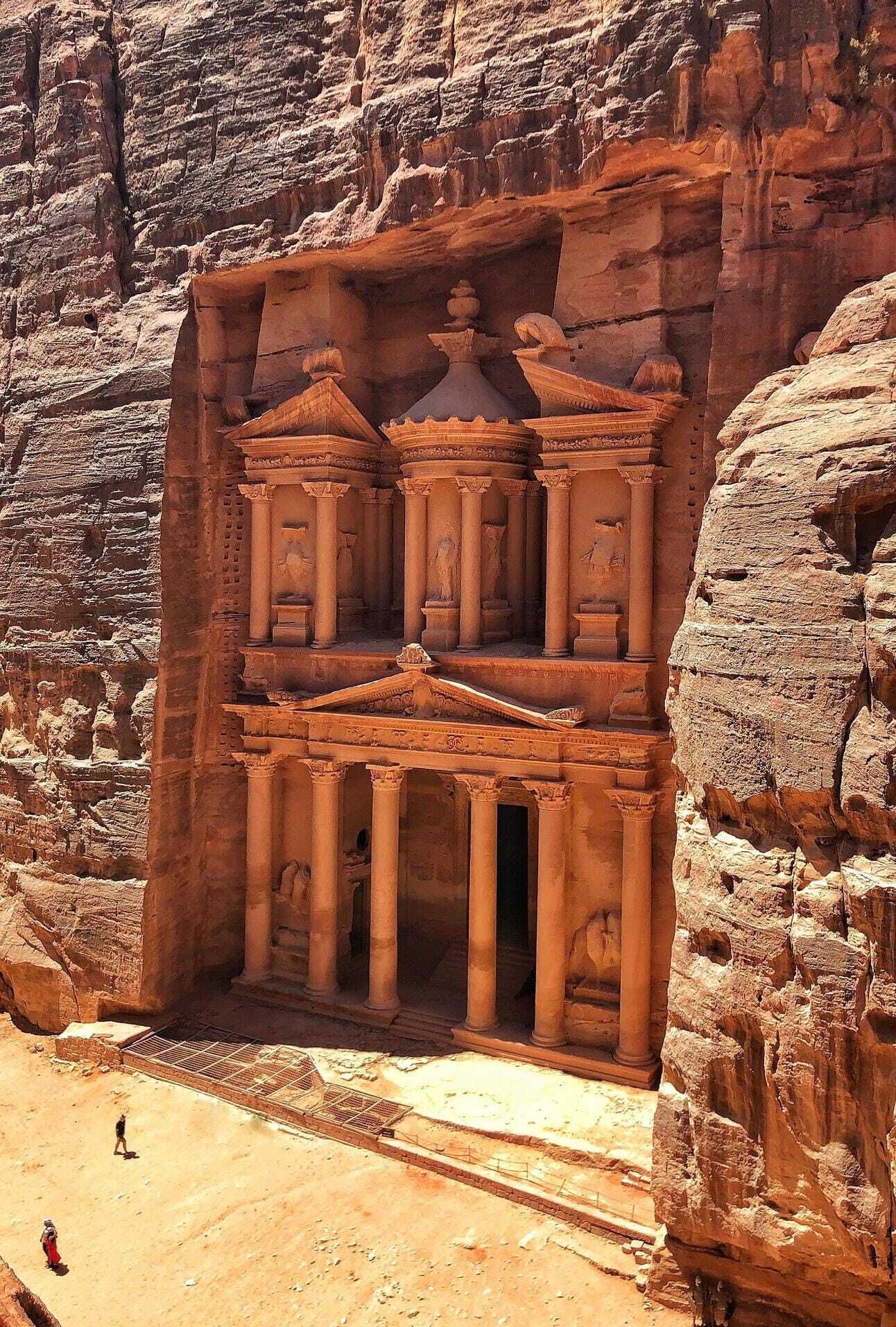
Quick Reminder: Our Subscriptions are live on 𝕏!
You can help to support our work, get notified of future projects and get access to bonus content...
First, the history.
2,400 years ago, the city of Petra (in modern-day Jordan) was the capital of the Nabataean Kingdom. It was a bustling city, central to trade routes that connected the Arabian Peninsula, Egypt, and the Mediterranean.
The Nabataeans were a nomadic Arab tribe, and they displayed the pinnacle of their culture through the structures they built in Petra, turning it into a thriving metropolis.
Their choice for the city’s location was perfect for many reasons.
Houses were hidden in the valleys, allowing the tribe to control trade routes and guard their profits by taking advantage of the rough terrain, which was alien to foreign forces.
For the following 4 centuries, Petra was a vital artery in the roads connecting Africa and Europe to the East.
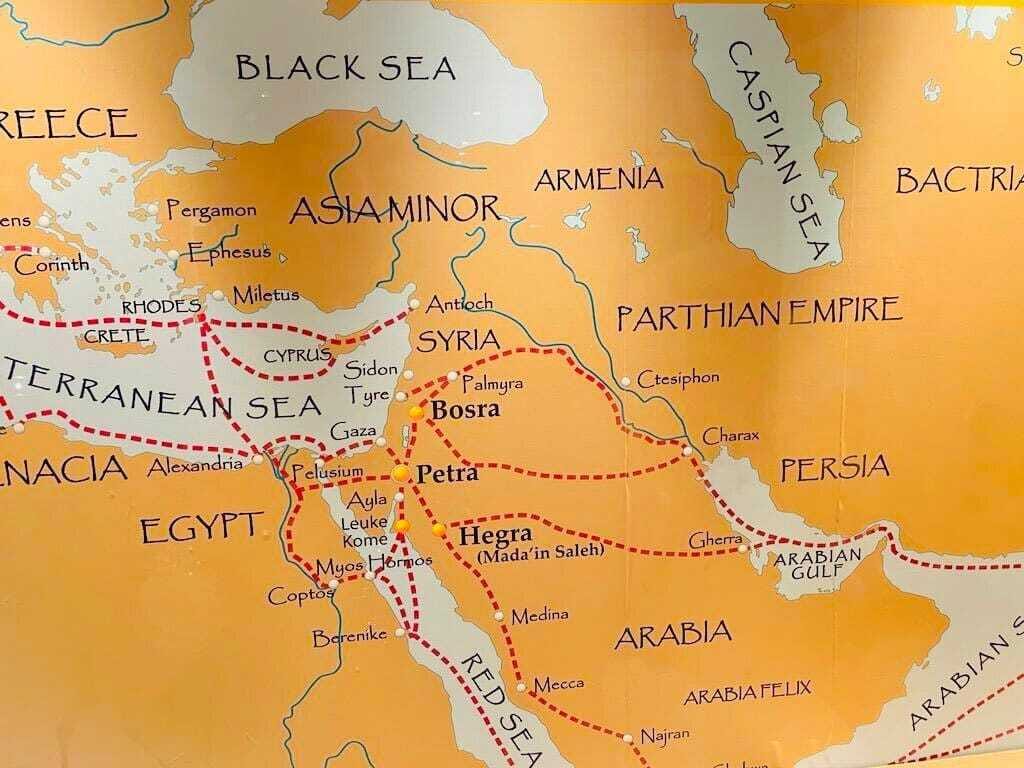
The name “Al-Khazneh”, or The Treasury itself, adds to the intrigue of this 2,000-year-old wonder.
To this day, its purpose is debated. Some suggest it was a temple dedicated to the Nabataean gods. But most evidence suggests it was a royal tomb, likely built for King Aretas IV, around the 1st century AD.
No inscriptions are present on the tomb, so we don’t know for certain, but despite that, one thing is clear: it was designed to inspire awe or maybe even intimidate….
The narrow gorge hiding Al-Khazneh, also known as the Sig, was an ideal location for construction; the narrow entrance protected the structure from sandstorms and hence natural erosion, allowing its façade to appear relatively untouched for centuries.
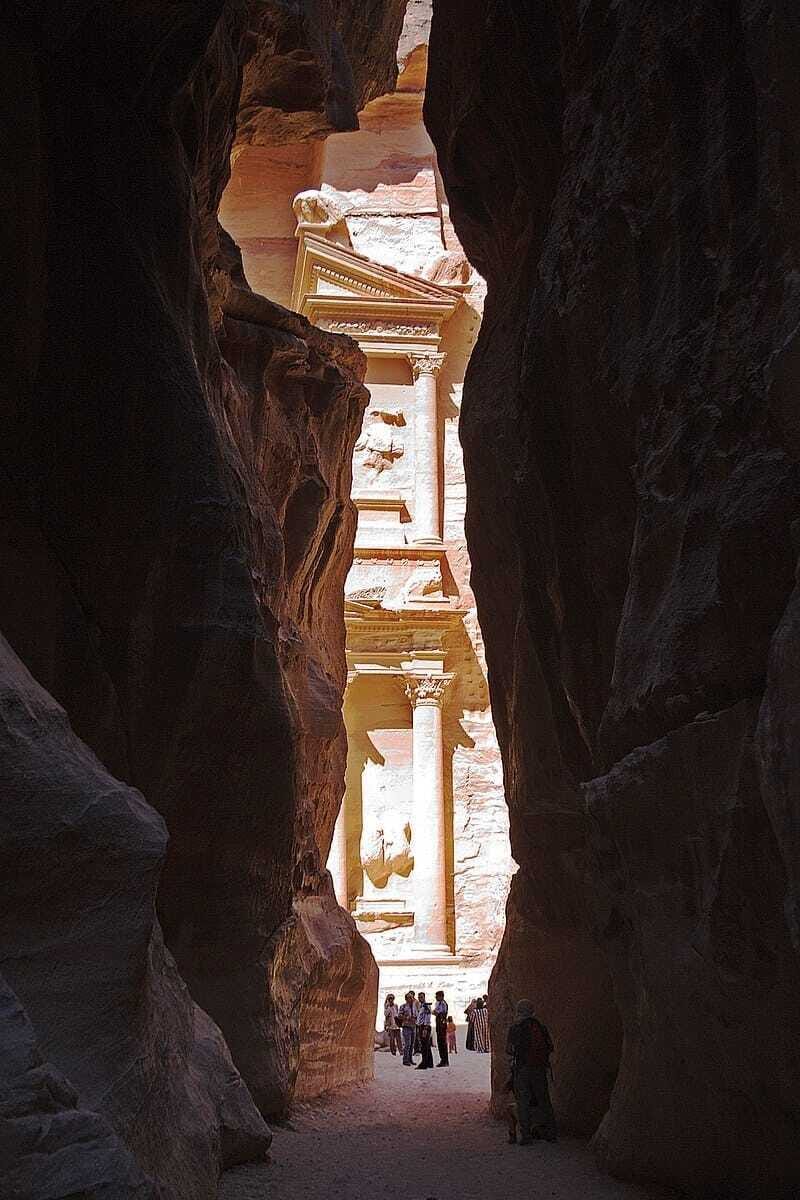
But to fully appreciate the Treasury, one must also understand the Nabataeans themselves.
We don’t know much about them, but we know enough to get a rough picture of what was going on.
Nomadic by origin, they mastered the art of carving an entire city into the sandstone cliffs of Petra. Although traders and merchants by trade, they possessed an aesthetic sense that hinted at a rivalry with the Egyptians.
Petra itself is a testament to their engineering genius. Despite the region’s arid climate, the Nabataeans developed sophisticated methods of water collection, dams, and cisterns, ensuring their city could sustain a large population even in times of drought.
We see evidence that suggests that the city wasn’t a desert city like we know it today, but rather a lush, green haven with amenities that you would expect in rival cities like Athens or Rome, such as ancient theatres, monasteries and temples.
Most were rock-cut, of course, and some have survived to this day, such as the Royal Tombs and Ad-Deir (the Monastery).
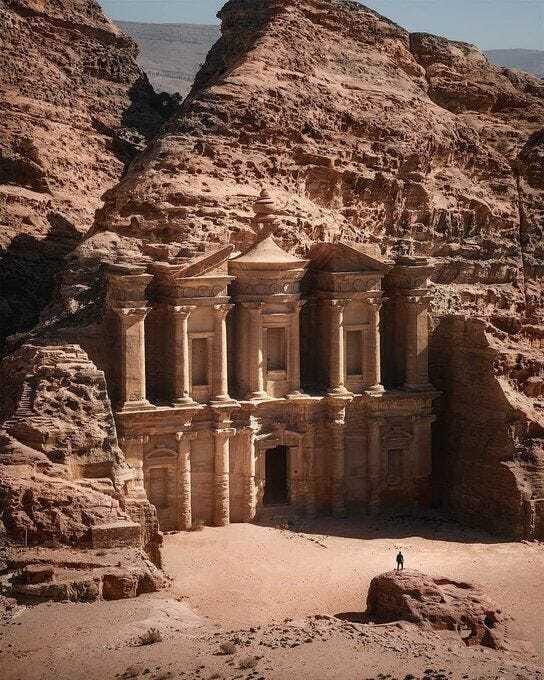
Something else to note is that Al-Khazneh wasn’t built in the usual sense…
It was excavated downwards. Stonemasons began at the very top of the cliff, cutting a narrow ledge across its face. From there, they worked their way down so that every detail was chiseled straight into the rock. It seems even weirder how, after the façade was complete, ceilings were carved first, then the floors. Horizontal shafts were cut into the rock to allow workers to stand on and to access the exterior walls.
Drainage channels were cut into the forecourt to protect it from flash floods, while the ground was levelled with layers of crushed rock and sand.
The process was slow but precise. Mistakes were costly because they were permanent.
All in all, this process took a miraculous 3 years.
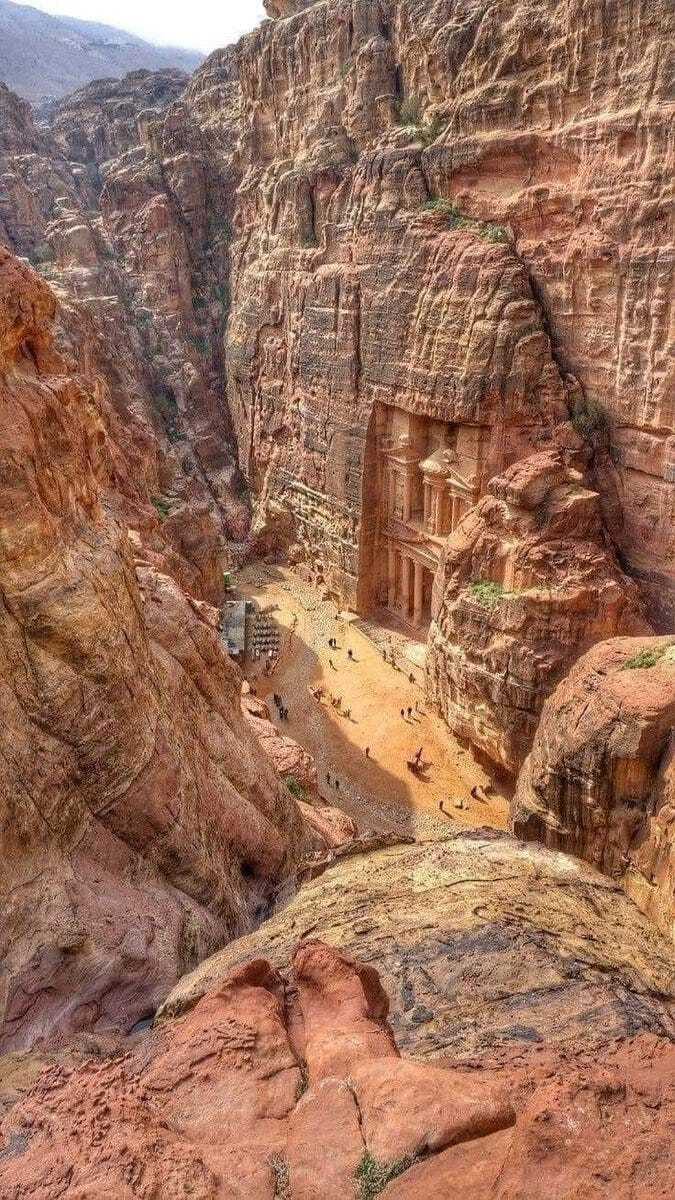
Though the Nabataeans left behind little written history, their architectural legacy speaks volumes.
Nowhere is this more evident than in the details of the Treasury.
At first glance, the facade resembles a classical Greco-Roman temple.
Its 6 Corinthian columns frame the lower portico, topped by a triangular pediment split to reveal a central tholos
The tholos was a cylindrical structure with a conical roof, a feature that was commonly seen in public buildings or monuments of Alexandria and Hellenistic Asia Minor
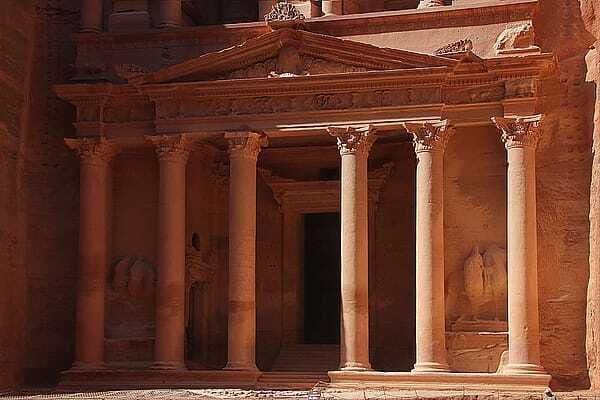
This influence isn’t surprising.
Considering that by the time it was built, Hellenistic architecture had spread across the East Mediterranean due to the conquests of Alexander the Great in the 4th century BC.
By the 1st century AD, Petra was part of the Roman cultural sphere, surrounded by powerful cultural cities like Alexandria, Palmyra and Damascus.
Nabataean kings employed Greek architects and adopted their styles to display power and sophistication.
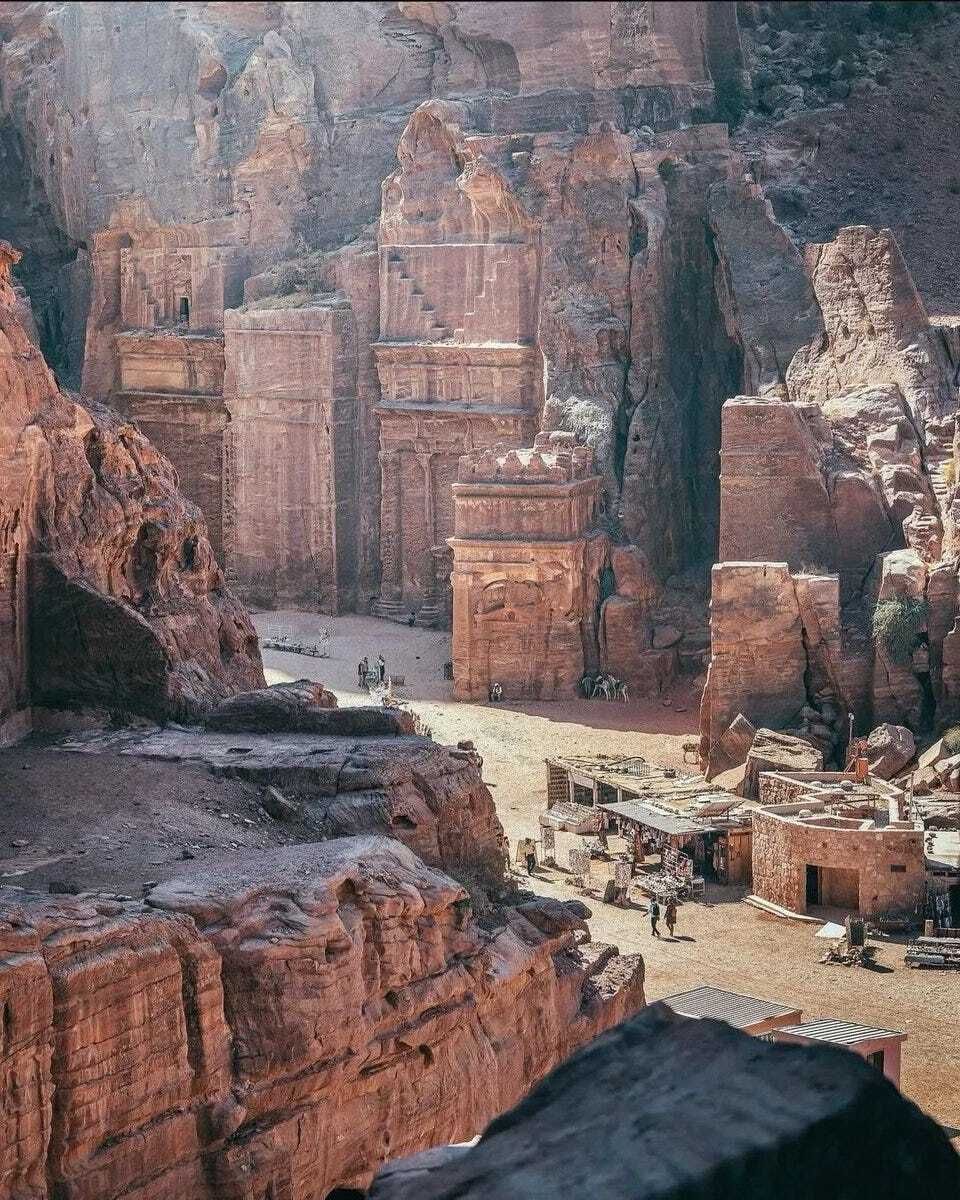
Egyptian motifs also make an appearance in the design.
The Nabataeans, having traded extensively with Egypt, were undoubtedly familiar with its artistic conventions.
In fact, the treasury’s very placement within a cliff face echoes the tombs of the Valley of the Kings.
A barren stretch of desert concealing more than 60 royal tombs (the most famous being that of Tutankhamun). Here, pharaohs of the New Kingdom, from Thutmose I to Ramses XI, sought protection from tomb robbers who had stripped the pyramids bare.
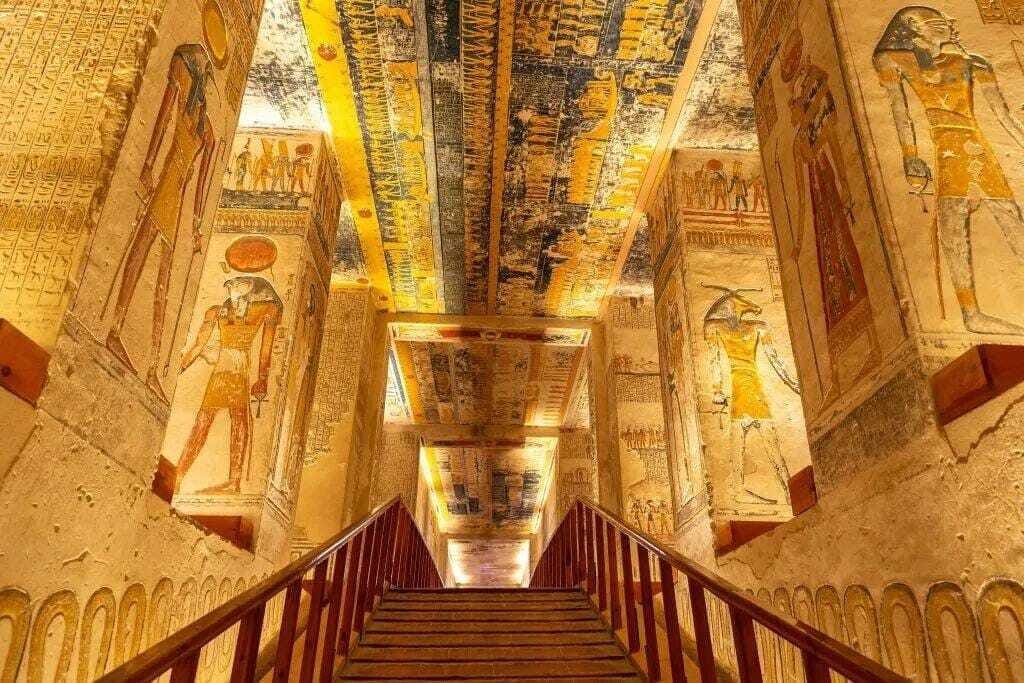
And that’s it for Petra (for now).
Recent archaeological activity in 2024 uncovered one of the biggest discoveries of all time. Researchers found a previously unknown tomb below the Treasury, containing 12 complete human skeletons buried alongside bronze, iron, and ceramic artefacts.
So even though its history may seem lost, there is still hope we will eventually get the full story of this ancient wonder.
But at the moment, “The Treasury” of Petra remains a great monument to the most successful king of the Nabataean Empire, Aretas IV.
Until Next Time,
World Scholar

P.S. Reply to this email with your favorite part of Al-Khazneh!
Reply